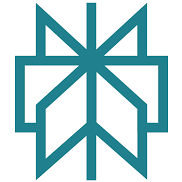Over the past few years, I’ve worked closely with dozens of entrepreneurs trying to launch their own gym clothing brands using print on demand.
Some failed. Some made it to $10K+ months in less than six. What made the difference? The ones who won focused on the basics—clear niche, clean branding, strong messaging, and relentless content.
Starting a gym line doesn’t require huge capital. You don’t need to hold inventory or take a massive risk. But you do need direction.
If you’re hoping to slap a logo on a tank top and call it a brand, you’re going to waste your time.
In this guide, I’m going to walk you through how to actually start your own gym clothing line using print on demand—step by step—based on what’s worked for real clients in real niches.
Step 1: Find Your Niche Before You Sell Anything
You can’t sell to “gym people” and expect traction. That’s like launching a food brand and saying it’s “for everyone who eats.”
The gym community is massive—and incredibly fragmented. Every audience has different values, aesthetics, and spending habits.
When I start working with a client, the first thing we do is drill down into the real reason behind their brand. Why does it exist?
Who is it helping? What does the brand stand for beyond just “workout gear”?
Questions I ask clients to uncover a real niche:
- What’s your gym background or personal connection to fitness?
People relate to real stories. If you lost weight, overcame something, or just love training—build around that. - Who do you want to support with this clothing line?
Stay-at-home moms? Strength athletes? Gen Z lifters on TikTok? These are very different audiences. - What kind of language, memes, and trends does your audience follow?
Your brand voice should feel like part of that community. - What gear are they already wearing—and what’s missing from it?
Gaps in fit, design, or inclusivity are huge opportunities.
Examples of strong niches I’ve seen succeed:
| Niche | Why it works |
|---|---|
| Powerlifting & strength gear | Straightforward messaging, masculine energy, ego-driven buyers |
| Gym wear for moms | Relatable lifestyle brand, inclusive sizing, mid-price point |
| Mental health + fitness mix | Purpose-led, viral potential, strong emotional hook |
| Eco-conscious activewear | Appeals to ethical buyers, great for storytelling |
| Anime + gym crossover | Hyper-niche, fan-driven, great for print-based merch |
Pro tip: The more niche you go, the easier it is to stand out. Broad gym brands are a race to the bottom.
Step 2: Choose a Print on Demand Supplier That Can Handle Gym Clothing
There’s a big difference between a supplier that simply prints on t-shirts and one that can actually support a serious gymwear brand.
Print on demand platforms vary massively in product range, shipping speed, print quality, and branding options—and if you pick the wrong one, you’ll burn time and money trying to fix mistakes later.
When I work with new clients, this is one of the first things we lock down. Because if the base product isn’t solid, the entire brand suffers.
And customers in the fitness space are picky. If the shirt feels cheap or doesn’t perform in a workout, they’ll never come back.
What to prioritise when picking a POD supplier for gym wear:
- Performance fabric availability
Most basic POD suppliers offer only cotton tees and hoodies. You need items like poly-blend tanks, dry-fit shirts, cropped sweatshirts, or even spandex leggings. If the product list doesn’t include athletic cuts or materials, move on. - Branding flexibility
You should be able to print inside labels, use tear-away tags, and ideally add your own logo to packaging. This creates a premium, branded experience—even with POD. - Shipping speed + fulfilment centres
Printful and Printify both have global fulfilment networks, but some suppliers are much slower depending on where the order is shipping. Make sure your supplier has facilities near your audience, especially if you’re targeting the UK, Europe, or North America. - Quality control + sample ordering
Always order samples before launch. I tell clients to test products by wearing them to the gym, washing them repeatedly, and checking how the print holds up under real use.
My go-to POD platforms (and what to look out for):
| Supplier | Pros | Cons |
|---|---|---|
| Printful | High-quality printing, wide gymwear catalogue, seamless Shopify integration, good branding options | Slightly higher base prices, fewer budget options |
| Printify | Huge product range, connects to multiple print partners for pricing flexibility, global fulfilment options | Quality varies depending on print provider, less control over branding |
| Apliiq | Custom branding, private labelling, fashion-forward styles, great for premium brands | Longer production times, higher pricing on some items |
| T-Pop | Eco-friendly focus, white-label branding, EU fulfilment | Smaller gymwear range, less ideal for US-based brands |
If you haven’t read it yet, check out our Printful Review where I break down the real pros and cons from a business owner’s perspective—after using it on 10+ stores.
You might also want to compare Printful vs Printify if you’re torn between the two. One offers premium control and consistency; the other gives you pricing flexibility by letting you choose from multiple print partners.
For those brand new to print on demand, start with our [how to start a t-shirt business] guide—it lays out the exact steps to test your first design without any upfront investment or risk.
What I usually recommend to clients:
- Start with Printful if you’re looking for a polished brand experience and gymwear options you can trust out of the box.
- Use Printify if you’re running price-sensitive campaigns or want more control over margins with volume pricing.
- Test Apliiq if you’re building a higher-end brand and want things like sewn-on patches, fabric sourcing, or woven labels.
And don’t forget: most POD brands fail not because of bad designs—but because their products feel like cheap merch. A customer can tell within seconds whether you’re building a real brand or running a side hustle.
Step 3: Design Gym Clothing That Actually Sells
Design is everything. Even with the best supplier, if your visuals are boring, your sales will flatline.
I’ve had clients come to me with high-quality shirts that didn’t sell at all because their designs looked like generic merch.
Designs need to match your niche’s tone, attitude, and visual identity.
For example, if you’re targeting powerlifters, you need bold fonts, sharp contrasts, and maybe a slightly aggressive tone.
For yoga apparel, softer colours and cleaner typography make more sense. If you’re building a meme-driven brand, punchlines and pop culture references will drive sales.
My design process for new gym brands:
- Brainstorm 10–15 ideas that represent your brand’s values
- Refine 5–7 ideas into rough concepts or moodboards
- Use Canva, Figma or Adobe Illustrator to create mockups
- Test designs in small Facebook or Discord communities
- Pick your top 3–5 and launch with a tight collection
Design elements that perform well:
- Big back prints with smaller front logo/text
- Minimalist designs with white on black or charcoal
- Colour palettes: Black, sand, olive, navy, off-white
- Motivational but edgy messaging (no cheesy clichés)
Avoid: Canva templates that look like every other dropship brand. Your design should feel native to your niche.
If you can afford it, work with a freelance designer on Fiverr or 99designs. You don’t need a huge budget—$30–$50 per design is plenty. I also recommend using tools like Placeit or Smartmockups to showcase your designs on real athletes and models instead of default flat lays.
Not sure where to get clean, professional-looking mockups?
Check out our guide on finding high-converting mockup templates—it’ll show you exactly where to find fitness-specific mockups that make your brand look 10x more legit.
Step 4: Set Up Your Store with Branding That Feels Legit
Your website is your brand’s front door. It should feel polished, intentional, and aligned with your audience’s expectations. If it looks like a generic dropshipping store with inconsistent fonts and low-quality images, your bounce rate will be through the roof.
If you’re just getting started, I recommend launching your store on Shopify.
It’s the most reliable platform I’ve used with clients—especially for print on demand. It integrates directly with Printful and Printify, is beginner-friendly, and has everything you need to build a real brand (not just a storefront).
I always recommend building your store on Shopify, especially if you’re using Printful or Printify. The integrations are seamless and it gives you everything you need to launch.
Core elements every store needs:
- Homepage with clear positioning: What do you stand for? Who is this for?
- Product collections: Men’s / Women’s / Bestsellers / New Drops
- Lifestyle images: Don’t rely only on mockups. Get content from real people.
- Trust builders: Return policy, shipping times, reviews, size charts
- Mobile-friendly experience: Over 70% of traffic will come from mobile
Page-by-page checklist:
| Page | Must-Haves |
|---|---|
| Homepage | Strong hero image, brand message, featured products, value proposition |
| Product | Multiple images, sizing info, short and punchy descriptions, reviews |
| About | Your story, your “why”, photos of you/team, behind the scenes |
| FAQ | Shipping, returns, materials, sustainability (if relevant) |
| Contact | Email form, social links, clear contact info |
Use apps like Judge.me or Loox to add social proof fast. Early on, even a few real reviews with customer photos make a big difference.
Step 5: Launch with Content and Influencer Marketing
This is the part where most people drop the ball. They launch the store, post once or twice on Instagram, and wonder why there are no sales.
If you want traction in the gymwear space, you need content. Not just product photos. Content that educates, entertains, or inspires your target audience.
I always recommend launching your brand with a clear 30-day content plan. This way you’re not just relying on paid ads or word-of-mouth.
Launch content strategy:
Daily/weekly content ideas:
- Gym memes using your designs
- Transformation content with your gear
- “What’s in my gym bag” featuring your products
- BTS: Sketches, packaging, order fulfilment
- Workouts in your clothing (show the gear in use)
Influencer outreach playbook:
- Identify micro-influencers (2K–10K followers in your niche)
- DM them: Offer free gear + reposting rights
- Ask for UGC videos you can use in ads or on-site
- Build a “brand ambassador” team over time
Giveaway structure:
- Prize: Bundle worth $100–$150
- Entry: Follow + Tag + Email sign-up
- Tools: Use Gleam.io or RafflePress
You should also start building SEO content alongside this. Launch blog posts like:
- “Best gym shirts for powerlifters”
- “Why moisture-wicking gym gear matters”
- “How to care for performance gym wear”
These long-tail articles build organic traffic slowly—but they’re incredibly valuable over time.
Step 6: Common Mistakes I See (and How to Avoid Them)
I’ve seen dozens of gymwear POD brands launch and disappear within three months. It’s almost always due to the same core mistakes—ones that are totally avoidable with the right planning.
Biggest mistakes and how to avoid them:
- Overcomplicating the launch
Start with 3–5 killer products, not 20 average ones. Keep the catalogue tight and focused. - No brand consistency
Fonts, colours, and tone should be aligned across Instagram, your store, and your packaging. - Chasing trends blindly
If you’re copying Gymshark, you’re already behind. Create something original that speaks to your people. - Ignoring your margins
Don’t price too low just to get sales. Know your cost per item, shipping, and ad spend. - Skipping customer service
POD brands live and die by their reviews. Respond to messages. Handle returns. Be real.
Final Thoughts
Starting a gym clothing line with print on demand is 100% doable—but only if you approach it with focus. You don’t need to go viral on day one. You just need to hit the right audience with the right message and deliver a quality product.
I’ve seen clients scale from zero to consistent $3K–$10K/month just by focusing on:
- One clear audience
- A handful of great products
- Consistent content and feedback loops
This isn’t about making quick money. It’s about building a brand you can be proud of—without taking on huge risk or inventory headaches.






